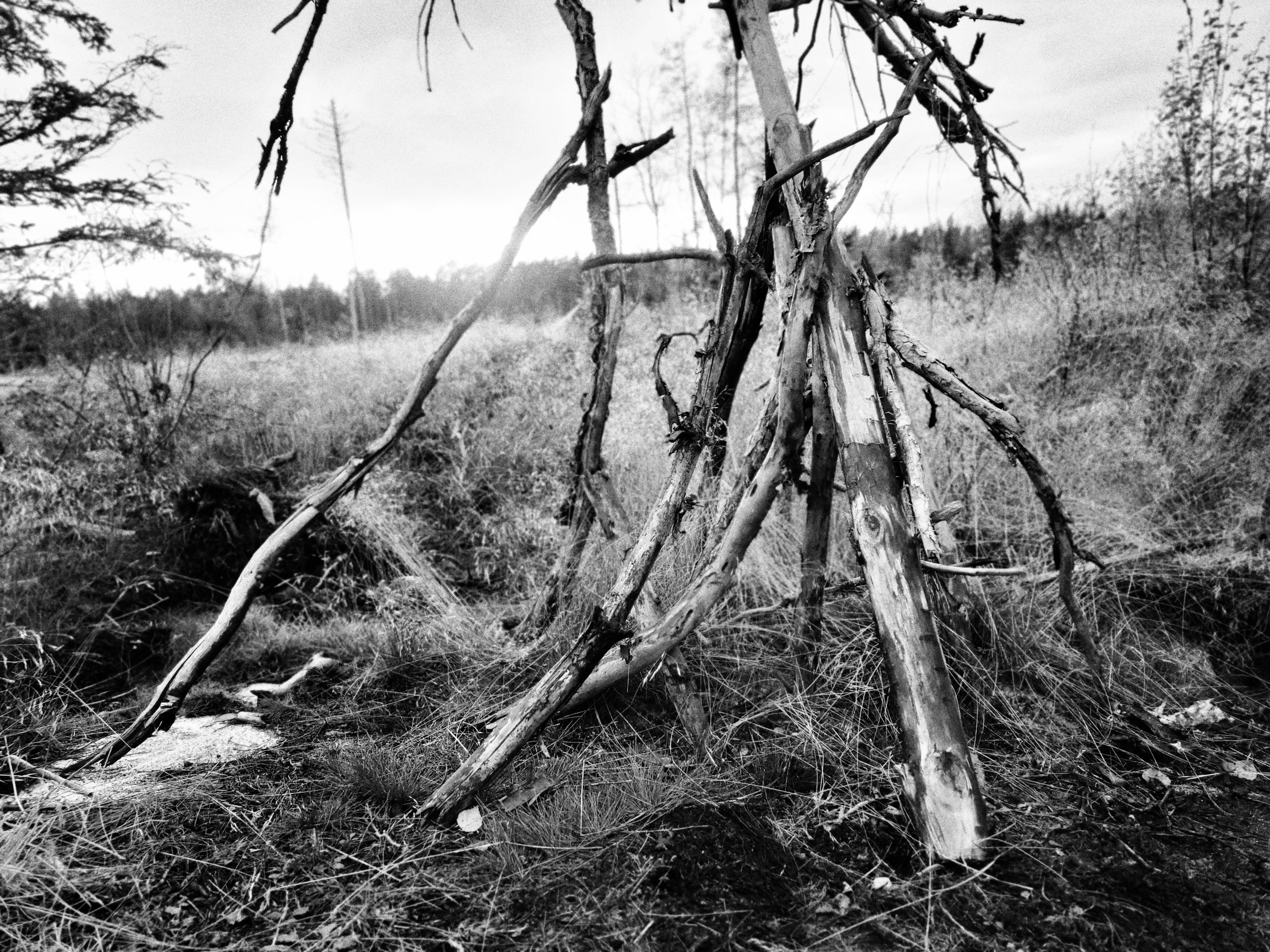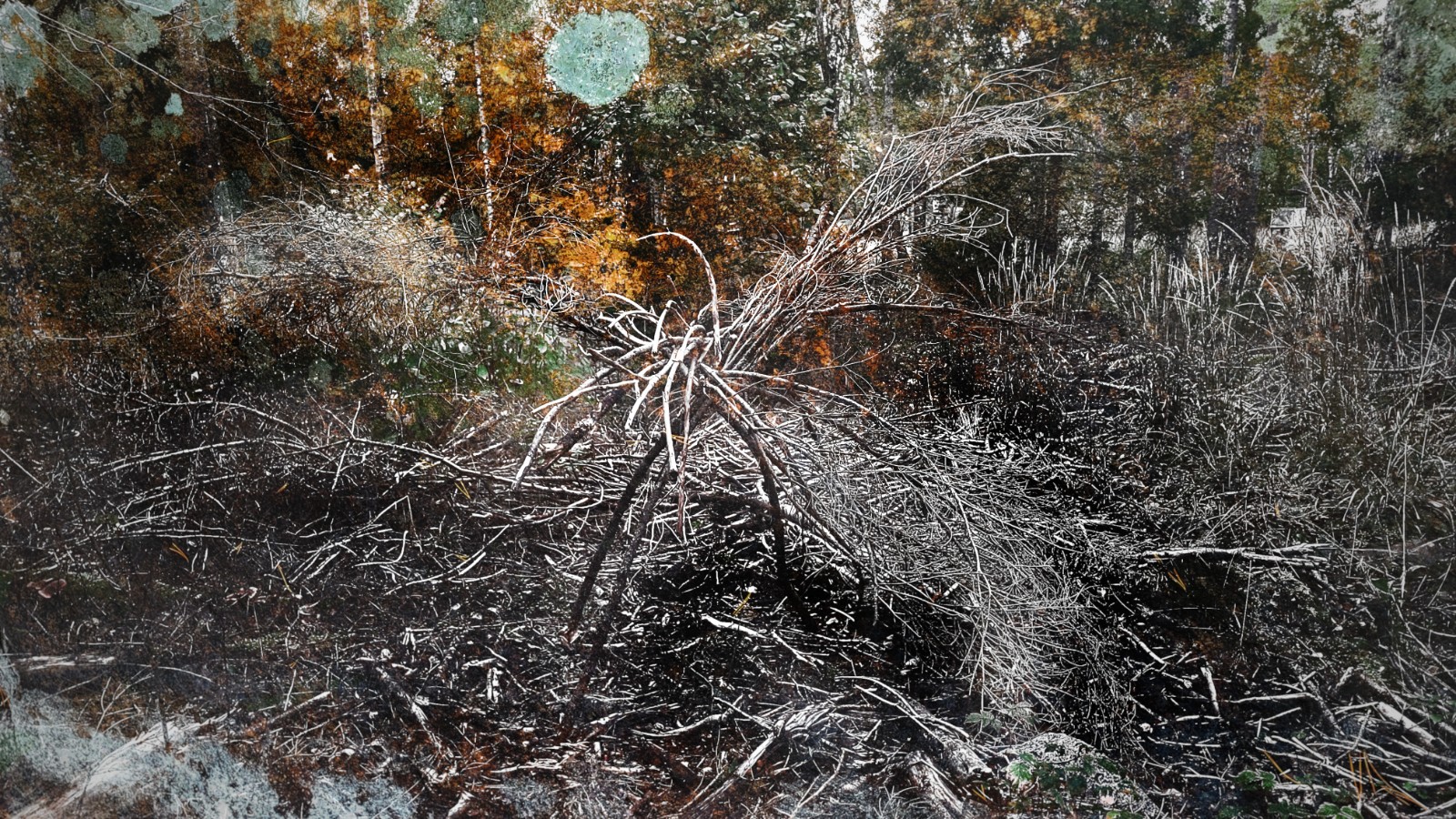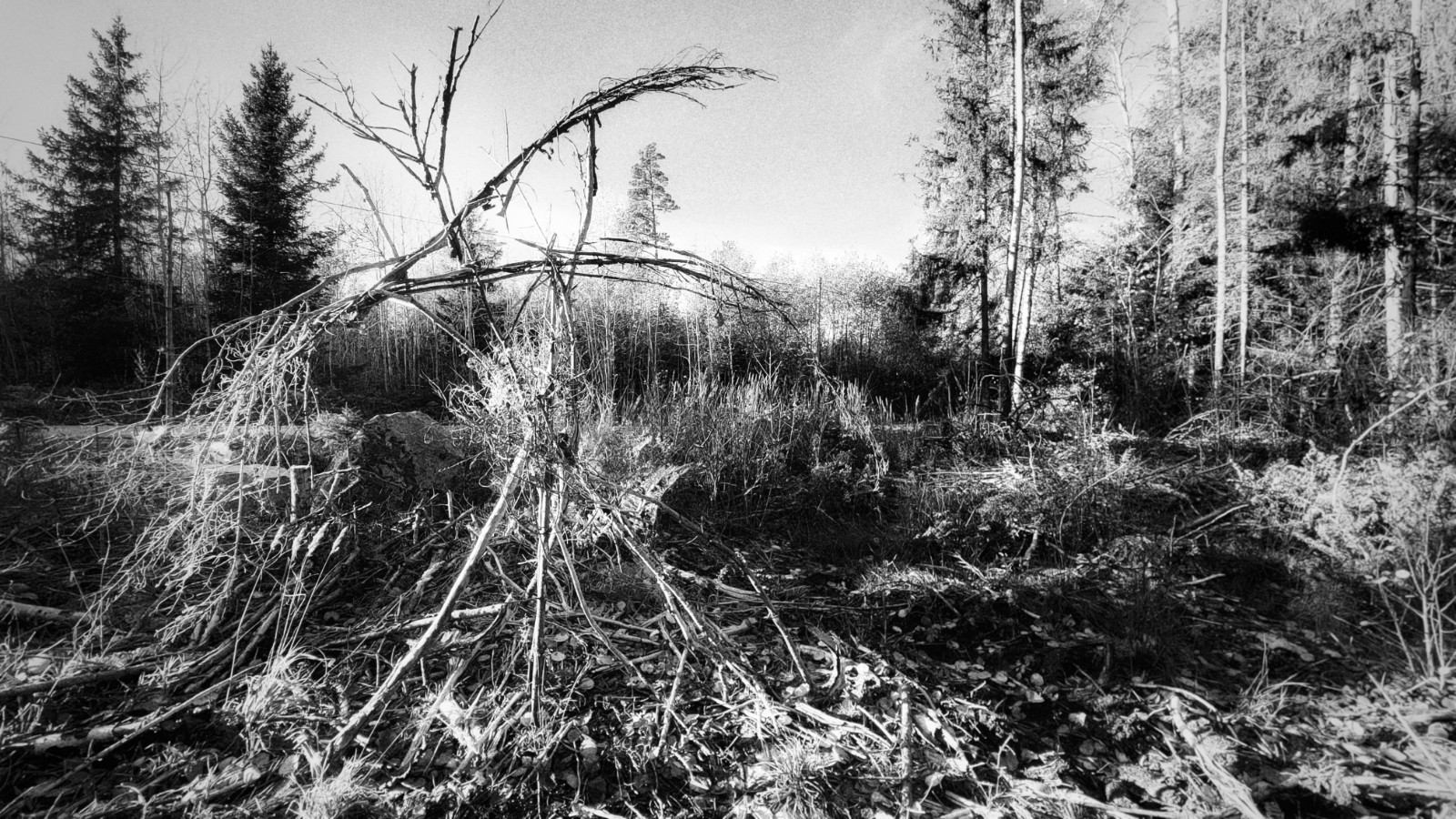earth imprints earth walkers hyperlandscapes land/sea/sky/humxn
fieldnotes of a transitioning earth This Sacred Withering
illustrative photography and design wavelines and keepers of time
ephemeral and organic sculpture, material, and performance investigations
systems design and science communication
earth walkers
Ongoing, multi-site and various organic materials
Earth Walkers are an on-going ephemeral sculpture project that explore notions of the pastoral/rural/pristine/untouched,clear-cutting and deforestation, settler-colonial systems and naratives,violence embedded within the fortress conservation and national parks systems, so-called Invasive species, and intimacy with land and place. In addition to providing sculptural and photographic explorations to engage with and contemplate, Earth Walkers also serve as symbols and objects of protest and grief associated with ecological violence and climate change.
I seek out farmer’s burn piles, areas of deforestation/logging and blight, areas of severe weather damage, so-called Invasive overgrowth, and any other places where the presence of Trees and Plants exist within the stages of death, discardment, violence, and/or regeneration.
In this collaboration with The Discarded, Transitioning, and Overabundant, I am able to support these forms of Life and Nature in creating identities, language, and shapes that are familiar to the Humxn realm, thereby allowing us to contemplate and consider what new intimate conversations we all might create with the Land around us.
Scotch Walkers
Tillamook and Chinook Land, Tillamook, Oregon
2021
Settler/Climate placed plant Scotch Broom
During the late 1800s, Scotch Broom was planted by the logging industry in Oregon near coastal regions in order to create nitrogen rich soil out of the expansive and shifting sand dune systems that ran along much of the Pacific Northwest coast. These plants traveled with settlers from the United Kingdom, and were not native to the Oregon Coast.
Scotch Broom is now considered to be an “invasive” species within Oregon and much of the West Coast, a label that allows state governments to spend tens of millions of dollars a year on control and erradification techniques that consistently fail to shift biodiversity health and balance. Within the state of Oregon, these techniques are most often found around cattle grazing sites, meaning the containment of these plants ultimately is in service of maintaining cattle farming practices, and is not actually in service of biodiversity health or climate change mitigation strategies.
Climate change and rapidly shifting coastal ecosystems along the west coast have made the conditions ripe for species like Scotch Broom to thrive and expand their habitat range, moving further and further inland. Scotch Broom functions as a ruderal plant--def. a plant that is often the first to colonize lands after a tramatic ecological event such as floods and wildfires--and therefore should be looked to as an important collaborator in filling for species and biodiversity loss as extreme weather events, fire, and rising temperatures strip ecostystems of nitrogen-fixing plants.
“Scotch Walkers” seek to give voice to this complex history and to offer a new way of relating to and being with this highly contested Plant Being. Within these Earth Walkers, Scotch Broom has been given full autonomy to express their being and form. Taken from control piles, these Scotch Broom branches were most likely on their way to be burned.
Ongoing, multi-site and various organic materials
Earth Walkers are an on-going ephemeral sculpture project that explore notions of the pastoral/rural/pristine/untouched,clear-cutting and deforestation, settler-colonial systems and naratives,violence embedded within the fortress conservation and national parks systems, so-called Invasive species, and intimacy with land and place. In addition to providing sculptural and photographic explorations to engage with and contemplate, Earth Walkers also serve as symbols and objects of protest and grief associated with ecological violence and climate change.
I seek out farmer’s burn piles, areas of deforestation/logging and blight, areas of severe weather damage, so-called Invasive overgrowth, and any other places where the presence of Trees and Plants exist within the stages of death, discardment, violence, and/or regeneration.
In this collaboration with The Discarded, Transitioning, and Overabundant, I am able to support these forms of Life and Nature in creating identities, language, and shapes that are familiar to the Humxn realm, thereby allowing us to contemplate and consider what new intimate conversations we all might create with the Land around us.
Scotch Walkers
Tillamook and Chinook Land, Tillamook, Oregon
2021
Settler/Climate placed plant Scotch Broom
During the late 1800s, Scotch Broom was planted by the logging industry in Oregon near coastal regions in order to create nitrogen rich soil out of the expansive and shifting sand dune systems that ran along much of the Pacific Northwest coast. These plants traveled with settlers from the United Kingdom, and were not native to the Oregon Coast.
Scotch Broom is now considered to be an “invasive” species within Oregon and much of the West Coast, a label that allows state governments to spend tens of millions of dollars a year on control and erradification techniques that consistently fail to shift biodiversity health and balance. Within the state of Oregon, these techniques are most often found around cattle grazing sites, meaning the containment of these plants ultimately is in service of maintaining cattle farming practices, and is not actually in service of biodiversity health or climate change mitigation strategies.
Climate change and rapidly shifting coastal ecosystems along the west coast have made the conditions ripe for species like Scotch Broom to thrive and expand their habitat range, moving further and further inland. Scotch Broom functions as a ruderal plant--def. a plant that is often the first to colonize lands after a tramatic ecological event such as floods and wildfires--and therefore should be looked to as an important collaborator in filling for species and biodiversity loss as extreme weather events, fire, and rising temperatures strip ecostystems of nitrogen-fixing plants.
“Scotch Walkers” seek to give voice to this complex history and to offer a new way of relating to and being with this highly contested Plant Being. Within these Earth Walkers, Scotch Broom has been given full autonomy to express their being and form. Taken from control piles, these Scotch Broom branches were most likely on their way to be burned.




Visitor
Ballyvaughaun, Ireland
2022
Dried Cabbage Palm
Visitor specifically engages with Ireland’s history of colonization and the ways that this colonial history has caused Ireland and all other coloniazed countries ancestral trauma and ecological violence have shaped Ireland’s landscape, ecology, and cultural identity.


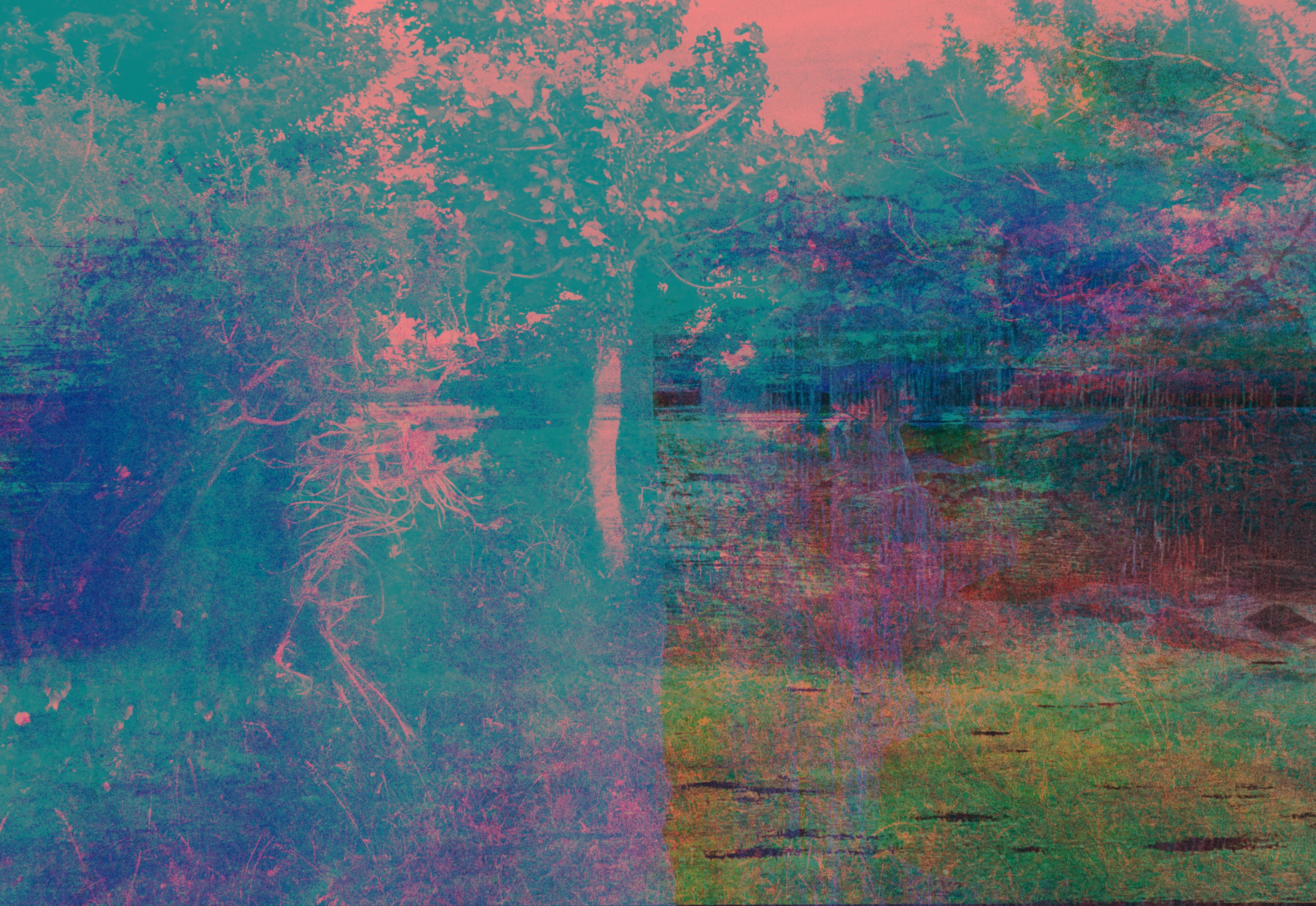

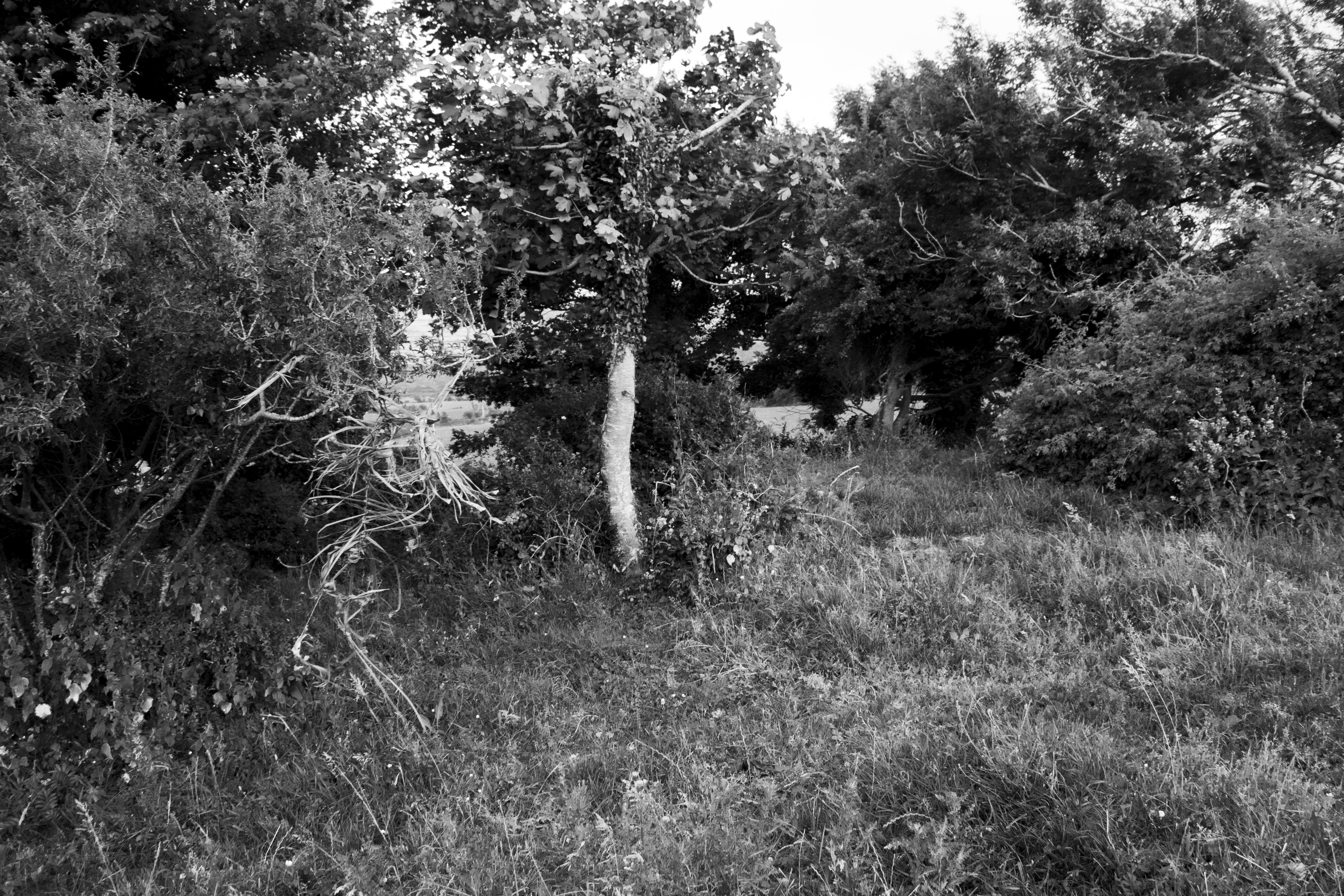



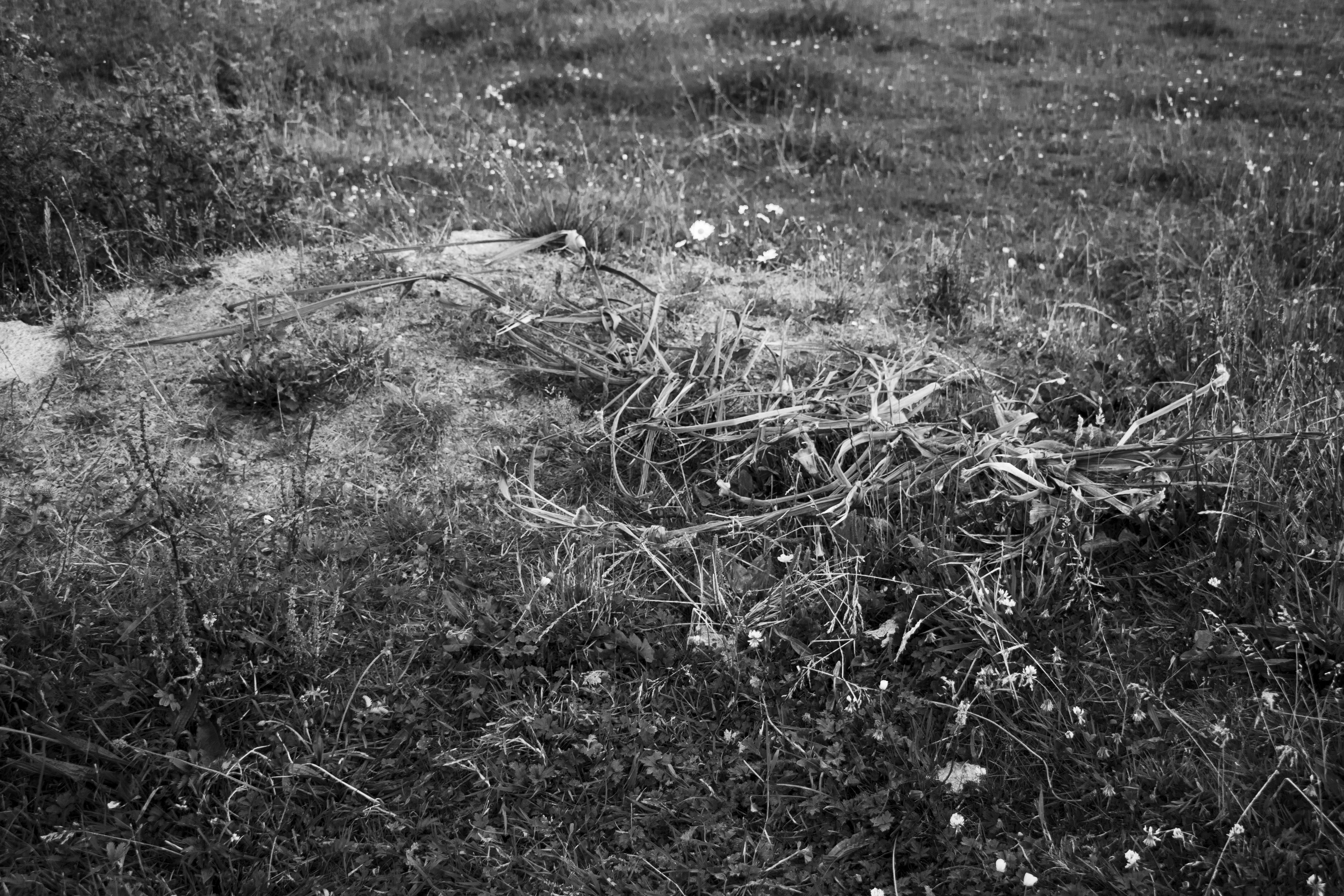

Cloonkeen and Westport, Ireland
2022

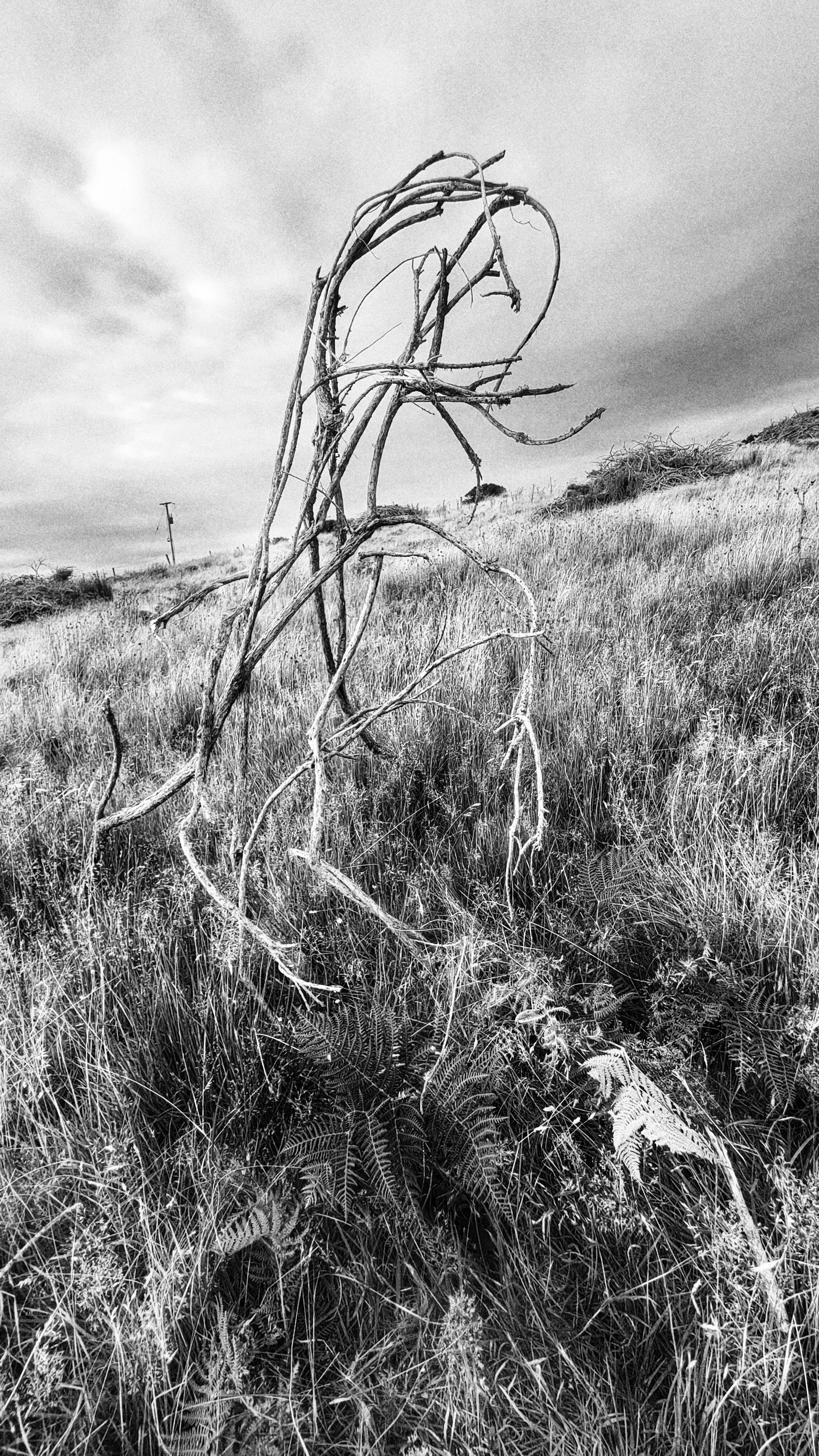







Björkö, Sweden
2022






